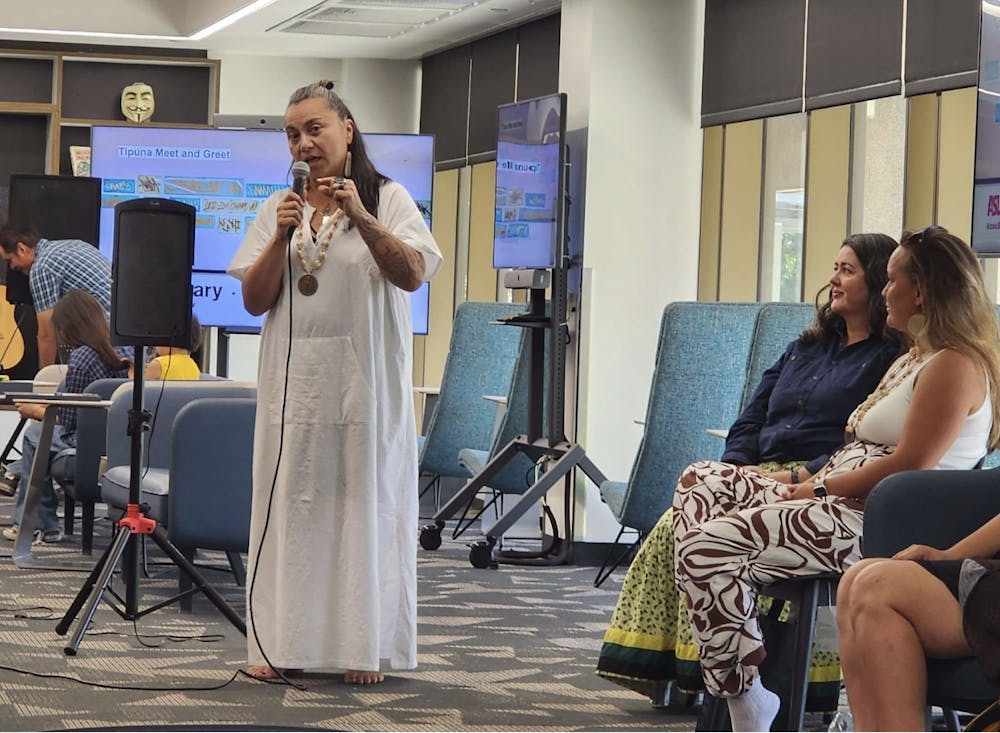The Labriola National American Indian Data Center hosted a group of researchers from The Tīpuna Project last Friday, where stories were told and food was shared as people spoke about their research and communities.
With two centers located in Arizona State University’s Hayden and Fletcher libraries, the Labriola Center is an Indigenous-led library center dedicated to cataloging Indigenous and tribal works and providing a safe space for Indigenous students at ASU.
The Tīpuna Project is an Aotearoa-based participatory action research group composed of both Māori and Pākehā (European or non-Polynesian New Zealanders) academics, artists and organizers. The group focuses on communicating with their ancestors, including them as co-researchers and using their lessons to fight the colonization of Indigenous culture.
“By centering ancestral presence and drawing on te ao Māori (the Māori worldview), we have experienced how ancestral mahi (work) can counter the dehumanizing impacts of colonialism, reconnecting people to whakapapa (a person’s lineage), whenua (a person’s connection to the land and their heritage), and the cosmos,” Teah Carlson (Te Whānau-ā-Apanui, Ngāti Porou, Waikato-Tainui, Kōtimana), Tīpuna Project co-leader, said.
The event took place over four hours and included presentations by each Tīpuna Project member present, an open mic for the audience, singing and dances and a lunch consisting of traditional Southwestern Native American foods such as cornbread, agua fresca and tamales.
Topics discussed included communion with ancestors and how to utilize their lessons, creating Indigenous-led spaces inside of Western universities, using Indigenous storytelling and singing traditions to share information, and the importance of children in passing on cultural knowledge.
“When we talk about indigenous space (physical and spiritual), we speak about a place where we can practice the richness of our culture safely, purposefully and with intergenerational intent at the fore,” Carlson said.
Attendees were encouraged to share their own experiences about their ancestry and how they could learn from their ancestors to enact change during the open mic.
The collaboration comes in the wake of advances by right-wing parties in both Aotearoa and the United States, with Indigenous groups facing new challenges as a result.
“There is no doubt that Indigenous rights and Indigenous research is being targeted by these right wing governments,” Naomi Simmonds (Raukawa, Ngāti Huri, Ngāti Wehiwehi), a researcher at the Tīpuna Project, said.
In the United States, the current administration’s cuts to social services disproportionately affect tribal nations, and in March President Donald Trump reversed Executive Order 14112, which gave Indigenous communities greater control over federal funding usage.
Despite these setbacks, the opportunity to share Indigenous stories across borders is treated with cautious excitement by some.
“For a long time our tikanga had been seen exclusively through the lens of commercialism to sell New Zealand’s international tourist brand. I hope that collaboration such as the Tīpuna Project can lead to not merely research opportunities but also a greater understanding of the real Aotearoa globally,” Elster Popham (Ngāti Rēhia, Ngāpuhi), a graduate from the University of Auckland whose work centers on Māori gender identity, said.
Tia Reihana (Ngāti Hine), a professor with the Tīpuna Project, said she was excited about the collaboration and hopes to be able to share their experiences with their peers.
“We are excited to continue this relationship and will share our experiences and learnings with our extended Indigenous communities in Aotearoa, New Zealand,” Reihana said.
While the Tīpuna Project has no plans to collaborate with other universities in the United States, Carlson has expressed interest in future collaborations with Labriola.
“These initial interactions feel like the beginning of something very special that will continue into the future,” Carlson said.

